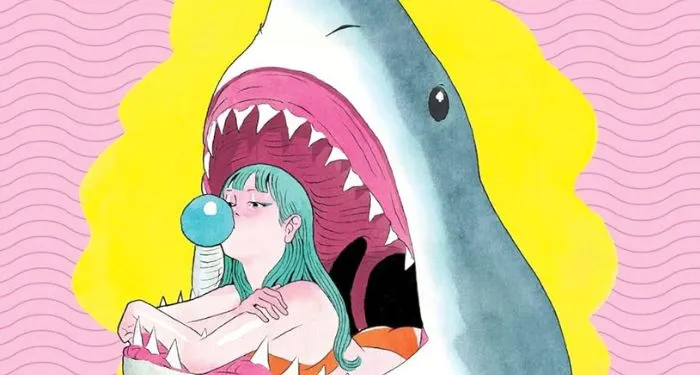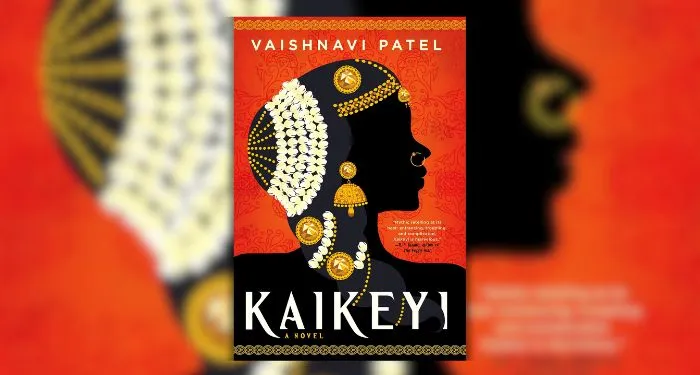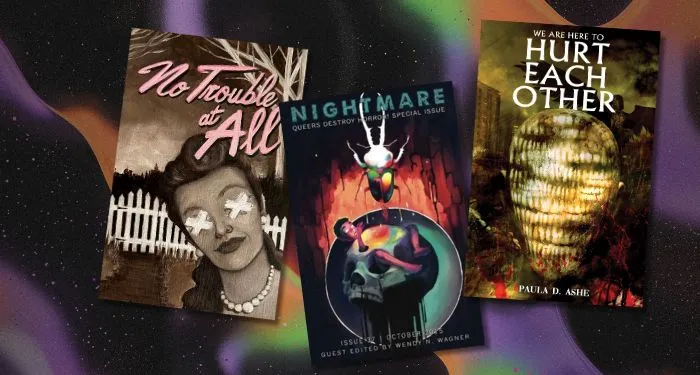
Pale Fire [1962] – ★★★★★
Pale Fire is one of the most inventive and original literary works of the twentieth century. On the face of it, it is nothing more than a 999-line poem titled Pale Fire by poet John Shade, presented with extensive commentary by self-appointed editor Charles Kinbote. But, dig deeper, and there emerges a narrative full of red herrings, secret meanings, and psychological and philosophical insights into the nature of authorship, interpretation, and truth. Erudite academic Charles Kinbote and now deceased brilliant poet John Shade were apparently acquaintances and neighbours, and, by publishing a commentary to Shade’s work, Kinbote desires nothing more than to pay a touching tribute to his dear friend. But, is it really what it is, or there are other hidden motivations behind his work on Shade’s poem? In his commentary, Kinbote veers off on his own paranoid obsessions with Shade, the manner of his death, and his own country of Zembla. At every turn in his work, Nabokov encourages us to read between the lines, question narratives (what is reality and what is fantasy?) and try to find the truth by ourselves. Below, I will try to see the novel through the four “illusions”: (i) the illusion of objective literary criticism; (ii) the illusion of language; (iii) the “illusion (delusion) of grandeur”; and (iv) the illusion of identity.
Nabokov hints as to what may be going in the story in the title and in the first lines of the poem penned by John Shade. “Pale Fire” is taken from a play by Shakespeare: “The moon’s an arrant thief, / And her pale fire she snatches from the sun”. Nabokov underlines that even the moon steals its light from the sun to appear what it is and what it is known for. The first verses of Shade’s poem equally talk of a bird that did not see a glass window in its flight (mistaking it for one continuous space) and crashed into it falling, paving the way for Nabokov to lay down his theme of many illusions dictating the narrative and our lives.
The same sentiment is seen in Nabokov’s treatment of academic scholarship, which can be reduced to a farce, and academic criticism of a literary work allegedly being nothing more than some subjective interpretation of at times close-minded, self-obsessed critics whom society regards as the pinnacle of wisdom. While Shade’s poem is a splendid, deeply personal poem of life, loss and grief, in which the poet details his early life and ruminates on the tragic suicide of his daughter and spirituality, that brilliant soul-searching “cry of a soul” becomes an almost incidental background used by Charles Kinbote to indulge in a myriad of delusions, petty considerations and fantastical digressions. In this regard, the main protagonist of Nabokov’s novel can be said to be the mind of one increasingly delusional, self-centred, passive-aggressive pseudo-academic who is slowly losing his grip on reality. He finds justification for his being, mythical story and reasoning in John Shade’s poem.
THE ILLUSION OF OBJECTIVE LITERARY CRITICISM
“I have no desire to twist and batter an unambiguous apparatus criticus into the monstrous semblance of a novel” [Nabokov, Vintage, 1962/1989: 86].
In a way, Nabokov is laughing at academic criticism of literary works in Pale Fire, satirising analytical pieces of deeply personal, idiosyncratic works. He criticises those who “appropriate” other people’s works, seeing in them things that are not there, making them their “own” figuratively. One can find any meaning in almost anything if one looks deep enough or has abundant imagination. On can find the deepest shades of black in the purest white by tweaking the definitions of colours, delving deep into our psychology or objective perception. Perhaps in Pale Fire, Nabokov underlines how there can never be a truly objective evaluation of any work, because who critiques is still a person with a mind of their own, with their own particular tastes, whims, prejudices and experiences that shape that person. At the point where a critic starts analysing, they already insert their own vision into a work. More than that, critics can twist works of art for self-serving benefit, putting themselves and their worldview at their centre.
Charles Kinbote insets himself into Shade’s narrative poem, and, with much erudition and confidence, notices things there that do not exist. He is our unreliable narrator who sees “the shadow of regicide in the rhyme”, clinging to the verses to see in them his own land of Zembla. For example, he thinks that the poet’s reference to “that crystal land” is an allusion to his “dear land” Zembla, without providing to us any evidence that this may be the case, and he also thinks that Shade’s line “all colours made me happy: even gray” may refer to his own nemesis, murderous Gradus from Zembla.
THE ILLUSION OF LANGUAGE
“Once [the story is] transmuted by you into poetry, the stuff will be true, and the people will come alive” [Nabokov, Vintage, 1962/1989: 214].
The illusion of language, or, rather, illusions created by language. Nabokov is known for his invention of words and various linguistic games he plays with the reader, and he does so in this novel as well, taunting his reader with the language and word definitions. Kinbote wants to put a “shade” on poet Shade, visualising the poet in his early boyhood as “physically unattractive, but beautifully developed lad”. Physically unattractive, but beautifully developed? He also describes a fowl as a “suburban imposter”, but isn’t it actually himself? At another point, Kinbote does not seem to catch the reference to Lolita, Nabokov’s famous book, “sweeping from “Florida to Maine”, and is oblivious or does not comment on the “curious fact” that the name of Zembla’s neighbouring country -“Sosed” is actually just the Russian word for “neighbour”.
If something is written in a scholarly, formal tone, it immediately creates the illusion of authority or well-researched “truth”, when, in reality, this may not be the case at all. Kinbote’s commentary is a testament to that, showing how erudition is not immune from madness. And, paradoxically, to understand what is really going on in the story, we have to employ almost the same approach as Kinbote employs in dissecting Shade’s poem. We have to read between the lines and deconstruct Kinbote’s words so as to get close to reality. In that way, when Kinbote describes Proust’s work as “a ghoulish fairy tale, an asparagus dream…the vocabulary of genius and its poetry, but no more”, we may assume that this description also applies to Kinbote’s own commentary, and we sense self-deception when Kinbote says “personally, I have not known any lunatics”.
THE ILLUSION (DELUSION) OF GRANDEUR
“Oh yes, the final text of the poem is entirely his”.
“…without my notes, shade’s text simply has no human reality at all…” [Nabokov, Vintage, 1962/1989: 28, 81].
What is apparent in the story is Kinbote’s self-centredness. Shade’s poem is a mirror to Kinbote’s soul and fractured mind. He finds there what he is looking for because all he sees there is himself. He “inserts” himself in the poem at every opportunity, explicitly saying that only his notes would provide “reality” to it. He sings praises for his beloved country of Zembla in the commentary, a topic which cannot be further from the poem’s content, which, in term, has to do with Shade’s very personal reflections on his past life experiences. Kinbote’s self-importance is all over his commentary, which gets quite absurd, for example, when he comments that the poet’s reference to winter is somehow connected to the fact that Kinbote and Shade met on a wintry day. More than that, Kinbote insists that he should be the one who receives credit for Shade’s skilful and creative use of metaphors and “mirror-words”, and claims that it was he alone who was the true inspiration for the poem. Kinbote, while appearing like the poet’s loyal friend and humble servant, not only uses the poem as a springboard for his ego, but also has the audacity to accuse Shade of being the one fabricating the truth or misremembering facts, for example, when he comments on the poem’s reference to the “case of the reversed footprints”.
THE ILLUSION OF IDENTITY
“A syllogism: other men die; but I am not/another; therefore I’ll not die”, John Shade Canto III [Nabokov, Vintage, 1962/1989].
Nabokov was interested in exploring identity through the prism of competitive streak between two men (for example, his novel Despair). In Pale Fire, he also pits two men against each other, drawing on the paradoxical relationship between the two (one alive, another deceased, one talented artist with much originality and creativity, another – most likely, a forgotten scholar whose life was spent dissecting other people’s work). It seems that Kinbote “borrows” the poem to justify his own story, existence and identity. He is not the author of the poem, but he uses it to “make up” and elaborate himself. Through the poem, Kinbote can finally emerge as a fiercely intelligent man of authority and taste, a person tied to his country’s rich history.

It can be argued that somewhere deep in Pale Fire, there is also this idea that our identity is shaped since birth by others. All we know and believe in are just a sum of what we have experienced, been told and exposed to. In other words, we cannot imagine and become something we have never known (as a blind-since-birth man cannot know colour red, for example, since he never experienced it). That makes our “truth” and beliefs rather subjective, and our fragile identity may be viewed as nothing more than what others make it to be (it is reduced to impressions of others). In the same vein, Nabokov is trying to satirise the state of artistic work, especially when the artist in question has passed away. That work becomes open to many (mis-)interpretations and elaborations, shaping in the process the perceived identity and beliefs of the original author, who now has no opportunity to either defend himself from certain critique or affirm it. This is the fate of Shade’s poem as Kinbote’s highly imaginative commentary “twists” it.
In turn, Kinbote is trying to live through the life of another, and we soon find out that the relationship between him and Shade were not as “equal” as Kinbote is making us believe. This is because in many passages Kinbote appears to be almost a stalker, prying into the intimate details of John Shade and his wife’s life, desperately clinging to them, and trying to be included in their circle. Kinbote appears so uncomfortable with his own identity that not only he starts to identify with Shade and his mind (while also trying to influence it with his Zembla), but also assumes a fictitious nationality, adopts a native language and gets completely lost in his mythical kingdom.
🔥 Pale Fire is a horror and a laugh at the same time. It is a laugh because of Nabokov’s satirical, farcical take, taunting the reader to accept the most absurd views and versions of events. Nabokov smiles at critics attempting to analyse objectively any work of art. The novel is a horror because of the sheer madness of it all if we finally accept the only logical conclusion of the premise. It is tragic how far we can veer off from “real truth” if we listen to self-appointed people of authority and scholarly wisdom.
The greatest work of art is often that which leaves enough space for the reader/viewer to start interpreting it for themselves; it is that which leaves enough space for the audience to inhabit and participate in the world created. Pale Fire is one of those great literary works. It is a circular rabbit-hole of the novel in many ways: Nabokov is Shade, Shade is Kinbote, and Kinbote is Nabokov. It is an “illusion within an illusion” novel: Kinbote’s commentary is an “illusion” layered over Shade’s poem, which is also an illusion as an artistic construction, and, in turn, that artistic construction is a figment of Nabokov’s imagination, who, may also be an illusion of a kind himself since he is perhaps present in the fictional work too – as Professor Botkin (real Kinbote?).
Pale Fire is a meta-fictional masterpiece and an endlessly provocative literary fever-dream.



















 English (US) ·
English (US) ·